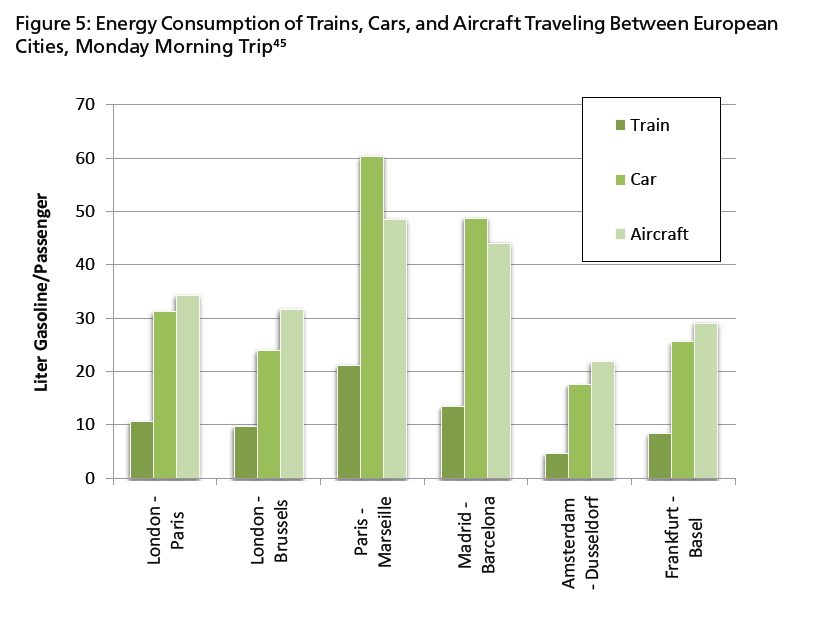CALPIRG
Executive Summary
As California moves toward construction of a new high-speed rail network, the state has much to learn from experiences abroad. High-speed rail lines have operated for more than 45 years in Japan and for three decades in Europe, providing a wealth of information about what California can expect from highspeed rail … and how the state can receive the greatest possible benefits from its investment.
Indeed, the experience of high-speed rail lines abroad suggests that California can expect great benefits from investing in a high-speed passenger rail system, particularly if it makes wise choices in designing the system.
High-speed rail systems in other nations have dramatically reduced air travel and significantly reduced intercity car travel. In California, similar results would ease congestion on the roads and in the skies and reduce the need for expensive new investments in highways and airports. High-speed rail service has virtually eliminated short-haul air service on several corridors in Europe, such as between Paris and Lyon, France, and between Cologne and Frankfurt, Germany.
- The number of air passengers between London and Paris has been cut in half since high-speed rail service was initiated between the two cities through the Channel Tunnel.
- The recent launch of high-speed rail service between Madrid and Barcelona, Spain, has cut air travel on what was once one of the world’s busiest passenger air routes by one-third.
- Even in the northeastern U.S., where Amtrak Acela Express service is slow by international standards, rail service accounts for 62 percent of the air/rail market on trips between New York and Washington, D.C., and 47 percent of the air/rail market on trips between Boston and New York.
- High-speed rail service between Madrid and Seville has reduced the share of travel by car between the two cities from 60 percent to 34 percent.
High-speed rail saves energy and protects the environment. In California, high-speed rail could cut our dependence on oil while helping to reduce air pollution and curb global warming.
- Continual improvement – Japan’s Shinkansen system is estimated to use one quarter the energy of air travel or onesixth the energy of automobile travel per passenger. The energy efficiency of Shinkansen trains has continually improved over time, such that today’s trains use nearly a third less energy, while traveling significantly faster, than the trains introduced in the midsixties.
- More efficient – On Europe’s highspeed lines, a typical Monday morning business trip from London to Paris via high-speed rail uses approximately a third as much energy as a car or plane trip. Similar energy savings are achieved on other European highspeed rail lines.
- Replacing oil with electricity makes zero emissions possible – Energy savings translate into reduced emissions of pollutants that cause global warming or respiratory problems – particularly when railroads power their trains with renewable energy. In Sweden, the country’s high-speed trains are powered entirely with renewable energy, cutting emissions of global warming pollutants by 99 percent.
…
Download Full Report (PDF) – Next Stop: California
About CALPIRG
www.CalPirg.org
“CALPIRG takes on powerful interests on behalf of Californians, working to win concrete results for our health and our well-being. With researchers, advocates, organizers and students, we stand up to powerful special interests to stop identity theft, fight political corruption, provide safe and affordable prescription drugs, strengthen voting rights and more.”
Tags: CA, California, CALPIRG, England, France, Germany, Japan, PIRG, Spain, United Kingdom







 RSS Feed
RSS Feed